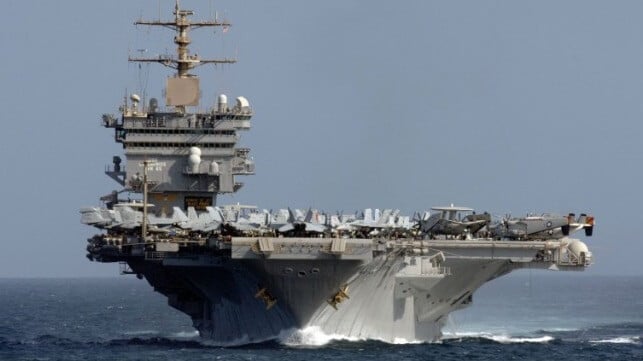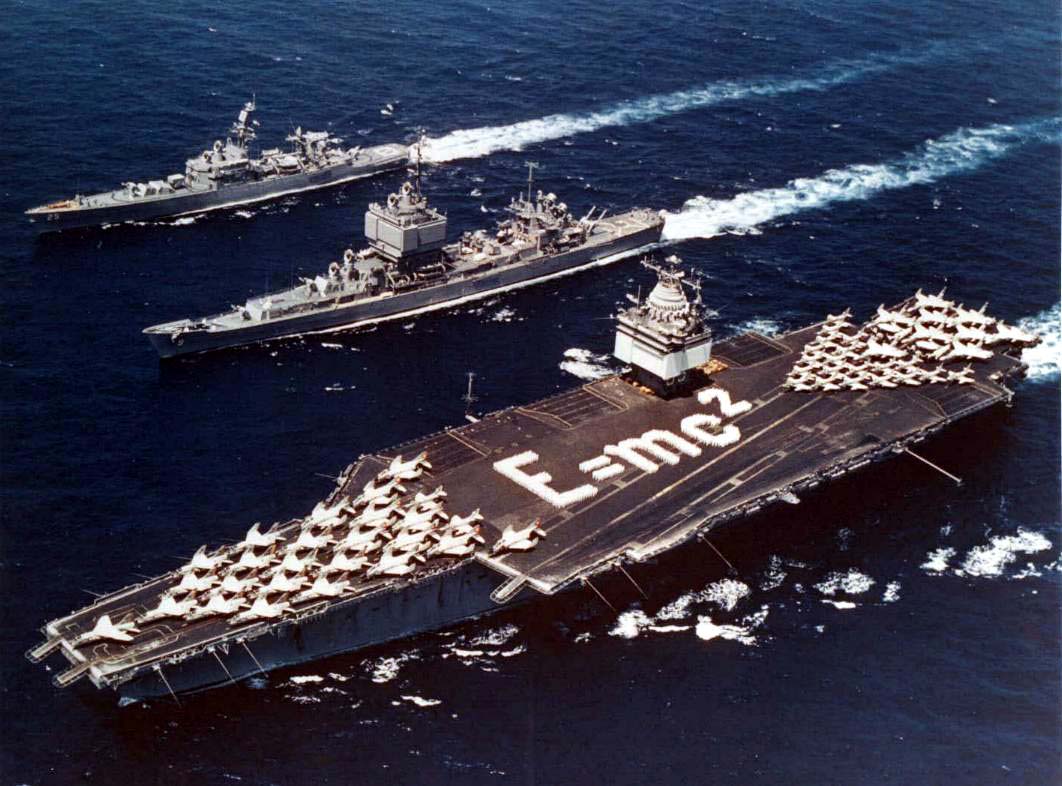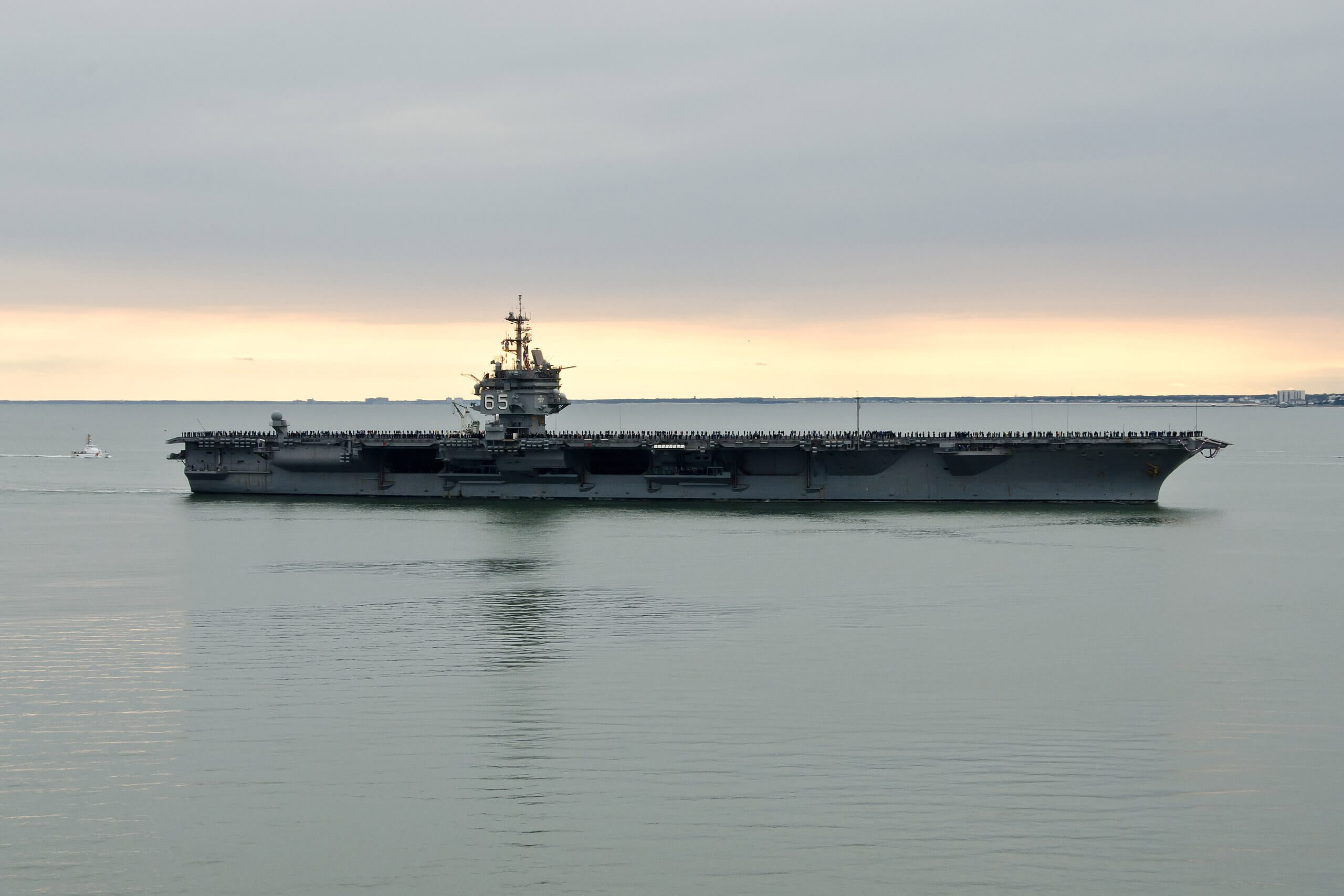U.S. Navy Will Dismantle Carrier USS Enterprise at a Commercial Shipyard

For more than a decade, the U.S. Navy has been mulling options for disposing of the world's first nuclear-powered aircraft carrier, USS Enterprise (CVN-65) and her eight nuclear reactors. On Tuesday, the service announced that it has reached a decision: Enterprise will be disassembled at a private shipyard, freeing up much-needed drydock space at the Navy's own public yards for repairing vessels in active service.
The winning yard has not yet been selected, but the Navy is considering options in three locations: Newport News, Virginia; Brownsville, Texas; and Mobile, Alabama. Of the three, Brownsville is the only port with a ship-recycling specialist experienced in disposing of U.S. Navy aircraft carriers.
The Enterprise's nuclear reactors have been defueled, but there are still "legacy radiological and hazardous wastes" on board, said the Navy's Puget Sound Naval Shipyard and Intermediate Maintenance Facility in a statement. Under the approved plan, these components will be removed, dismantled into hundreds of pieces and shipped to storage facilities at one of three inland sites: Energy Solutions in Clive, Utah; Waste Control Specialists in Andrews, Texas; and the DOE Savannah River Site in Aiken, South Carolina.
The other two alternatives in the Navy's environmental planning process would have seen Enterprise dismantled at the Bremerton public shipyard. These options would have cost the taxpayer about twice as much, according to the Navy, and would take about 10 years longer. Doing the work at Bremerton would also tie up the shipyard's staff and facilities with a legacy disposal project when they already have a full workload with submarine and carrier maintenance (and decommissioning older subs).
The Navy's alternatives for dismantling the Enterprise at Bremerton called for keeping the reactors intact and moving them whole, a complex and challenging task. This called for packing the reactors in custom 3,000-ton caskets and barging them up the Columbia River to the Hanford storage site in Washington. The caskets would have been so large that a new barge slip would have been required to handle them at the destination port in Benton, Washington.

USS Enterprise with nuclear-powered escorts USS Long Beach and Bainbridge, the world's first all-nuclear task force (June 1964, USN)
Enterprise was the first nuclear-powered aircraft carrier and served the U.S. Navy from 1961 until her decommissioning in 2017. Known by her nickname, “Big E,” she remains the longest naval vessel ever constructed, though she is outranked by the Nimitz and Ford-class carriers when measured by displacement. She was present at some of the most important moments in modern U.S. Navy history, including the blockade of Cuba during the Cuban Missile Crisis; aerial combat and bombardment missions during the Vietnam War; the evacuation of the U.S. Embassy during the fall of Saigon; the bombing of Al Qaeda and Taliban installations after 9/11; and duty in the Persian Gulf in support of Operation Enduring Freedom. She made her final deployment in 2012 and began deactivation at the end of that year, but budget sequestration delayed the process of removing her nuclear fuel until the end of 2016. She has been stored at Hampton Roads while awaiting final dismantling.

that matters most
Get the latest maritime news delivered to your inbox daily.
 USS Enterprise returning from her final deployment, 2012 (USN)
USS Enterprise returning from her final deployment, 2012 (USN)
USS Enterprise's name will live on: the third Ford-class aicraft carrier (CVN-80) will also be named USS Enterprise. CVN-80 will also contain about 14 tons of steel salvaged from CVN-65, so the continuation will be more than just symbolic.
